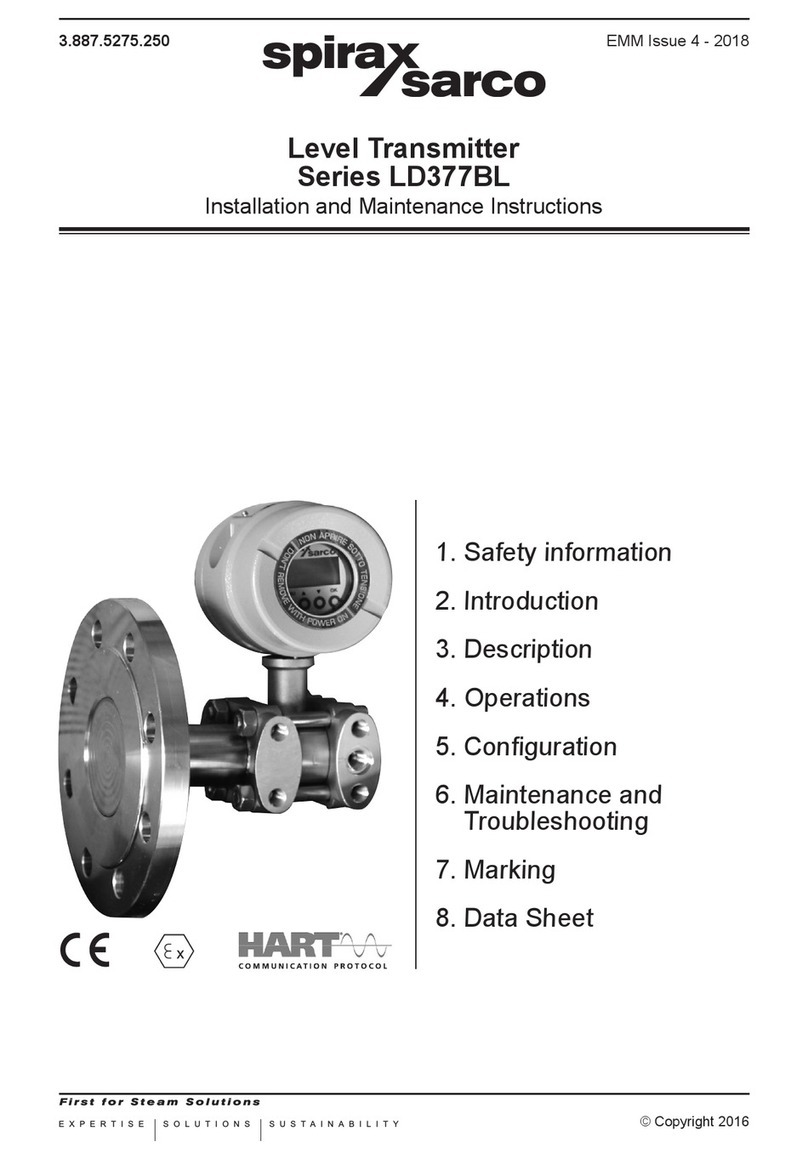
3.885.5275.200 3
1.SafetyInformation
Safe operation of these products can only be guaranteed if they are properly installed, commissioned,
used and maintained by qualied personnel (see Section 1.11 on this document) in compliance with
the operating instructions.
General installation and safety instructions for pipeline and plant construction, as well as the proper
use of tools and safety equipment must also be complied with.
1.1 Intended use
Referring to the Installation and Maintenance Instructions, name-plate and Technical Information
Sheet, check that the product is suitable for the intended use/application. These products comply
with the requirements of the European Pressure Equipment Directive 97/23/EC and carry the mark
when so required. It should be noted that product rated as ‘SEP’ are required by the Directive not
to carry the mark.
i) These products have been specically designed for use on steam, air or condensate /water,
which is in Group 2 of the above mentioned Pressure Equipment Directive. The products’ use
on other uids may be possible but, if this is contemplated, Spirax Sarco should be contacted
to conrm the suitability of the product for the application being considered.
ii) Check material suitability, pressure and temperature and their maximum and minimum values.
If the maximum operating limits of the product are lower than those of the system in which
it is being tted, or if malfunction of the product could result in a dangerous overpressure or
overtemperature occurrence, ensure a safety device is included in the system to prevent such
over-limit situations.
iii) Determine the correct installation situation and direction of uid ow.
iv) Spirax Sarco products are not intended to withstand external stresses that may be induced
by any system to which they are tted. It is the responsibility of the installer to consider these
stresses and take adequate precautions to minimise them.
v) Remove protection covers from all connections before installation.
1.2 Access
Ensure safe access and if necessary a safe working platform (suitably guarded) before attempting
to work on the product. Arrange suitable lifting gear if required.
1.3 Lighting
Ensure adequate lighting, particularly where detailed or intricate work is required.
1.4 Hazardous liquids or gases in the pipeline
Consider what is in the pipeline or what may have been in the pipeline at some previous time.
Consider: ammable materials, substances hazardous to health, extremes of temperature.
1.5 Hazardous environment around the product
Consider: explosion risk areas, lack of oxygen (e.g. tanks, pits), dangerous gases, extremes of
temperature, hot surfaces, re hazard (e.g. during welding), excessive noise, moving machinery.
1.6 The system
Consider the effect on the complete system of the work proposed. Will any proposed action (e.g.
closing isolation valves, electrical isolation) put any other part of the system or any personnel at risk?
Dangers might include isolation of vents or protective devices or the rendering ineffective of controls
or alarms. Ensure isolation valves are turned on and off in a gradual way to avoid system shocks.
1.7 Pressure systems
Ensure that any pressure is isolated and safely vented to atmospheric pressure. Consider double
isolation (double block and bleed) and the locking or labelling of closed valves. Do not assume that
the system has depressurised even when the pressure gauge indicates zero.
1.8 Temperature
Allow time for temperature to normalise after isolation to avoid danger of burns.
If parts made from Viton have been subjected to a temperature approaching 315°C (599°F) or higher,
it may have decomposed generating toxic fumes. Avoid any inhalation of fumes or skin contact.
If parts made from PTFE have been subjected to a temperature approaching 260°C (500°F) or
higher, they will give off toxic fumes which, if inhaled, are likely to cause temporary discomfort.
It is essential for a no smoking rule to be enforced in all areas where PTFE is stored, handled or
processed as persons inhaling the fumes from burning tobacco contaminated with PTFE particles
can develop ‘polymer fume fever’.






























